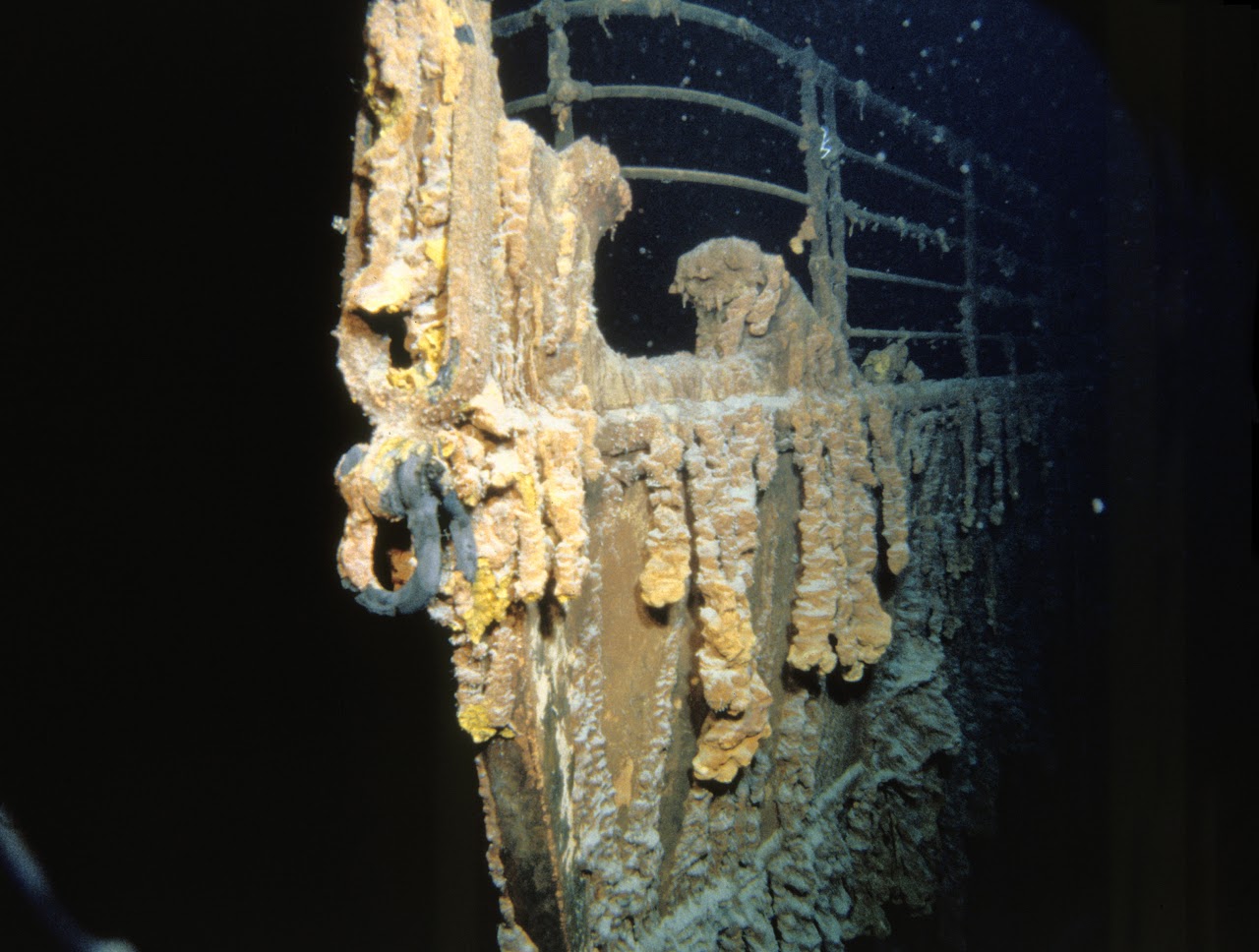Long before it set sail, RMS Titanic’s Captain E J Smith told the New York Times:
‘I cannot conceive of any vital disaster happening to this vessel. Modern shipbuilding has gone beyond that.’
He was not the only one who got it wrong.
There were enquiries in America and Britain after the disaster. They concluded that it was caused by a combination of lack of preparedness, high speed, weather conditions, ice warnings being ignored, inadequate lookout and not enough lifeboats.
 Titanic’s bow photographed in 2004. Photo from the Titanic Archive Project, NOAA
Titanic’s bow photographed in 2004. Photo from the Titanic Archive Project, NOAA
No one wanted anything like it to ever happen again, so they quickly brought in new rules and regulations to make things safer:
- All ships have to carry enough lifeboats for everyone on board.
Titanic only had enough for half its people.
- Ships have to run regular lifeboat and emergency drills so people know what to do.
Many of Titanic’s lifeboats left with empty seats.
- Ships have to monitor the radio 24 hours a day, in case someone transmits a distress signal.
The closest ship didn’t hear Titanic’s calls for help as its radio operator had switched off and gone to bed.
- The International Ice Patrol was set up in 1913 to monitor icebergs and warn ships of danger.
Titanic ignored six warnings of sea ice.
- The United Nations developed the SOLAS (Safety Of Life At Sea) Convention, an international maritime treaty that sets safety standards for the construction, equipment and operation of merchant ships.
Researchers discovered that the steel from Titanic’s hull and rivets was of poor quality, and its watertight bulkheads badly designed.
As James Cameron, who’s visited Titanic’s wreck over 30 times and directed the movie, said:
‘Hubris [dangerous overconfidence] is one of the most important lessons of Titanic.’
Hopefully the lesson’s been learnt.
There were 12 dogs on board Titanic. There was going to be a dog show but the ship sank the day before. Three dogs survived.